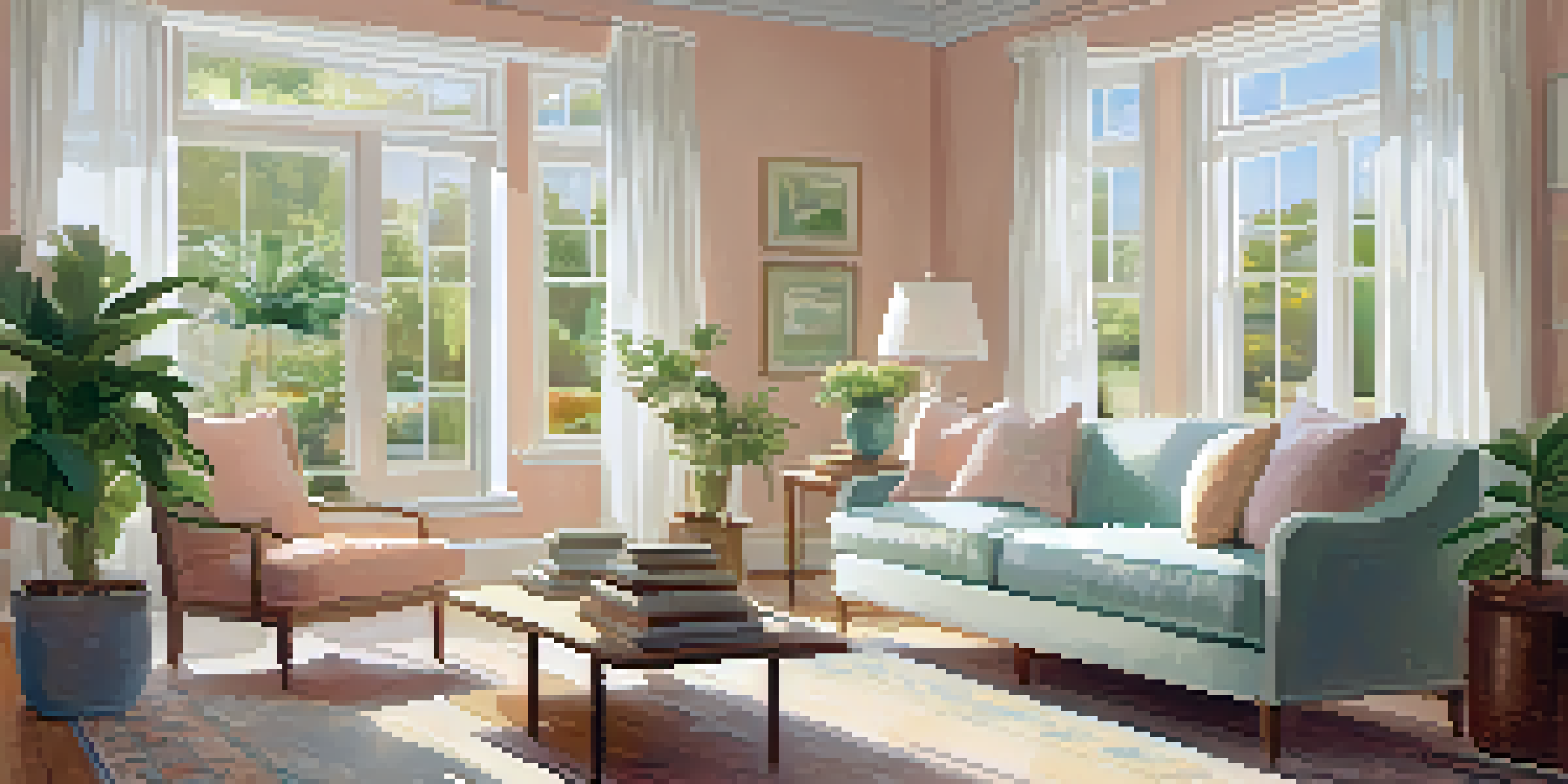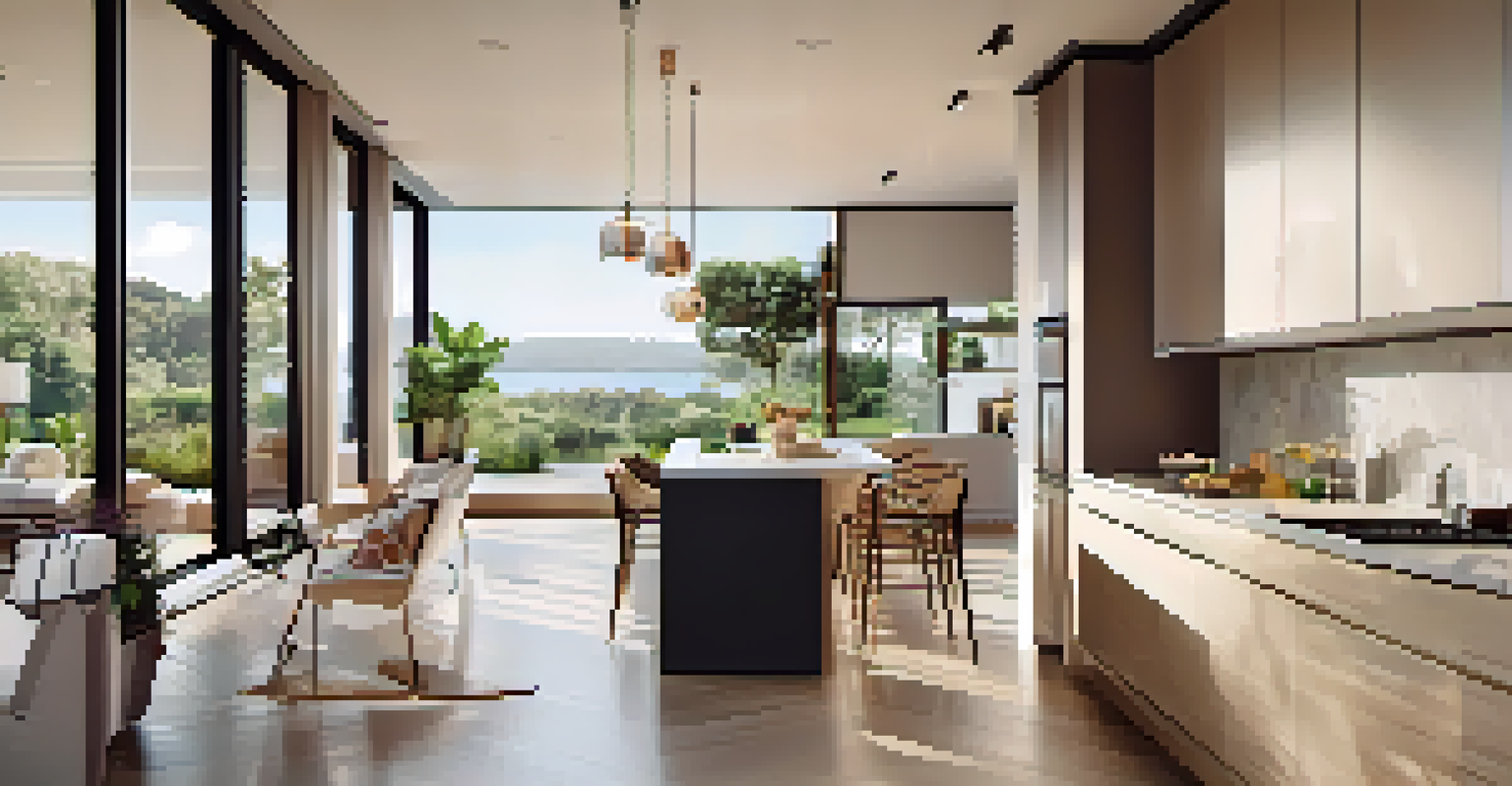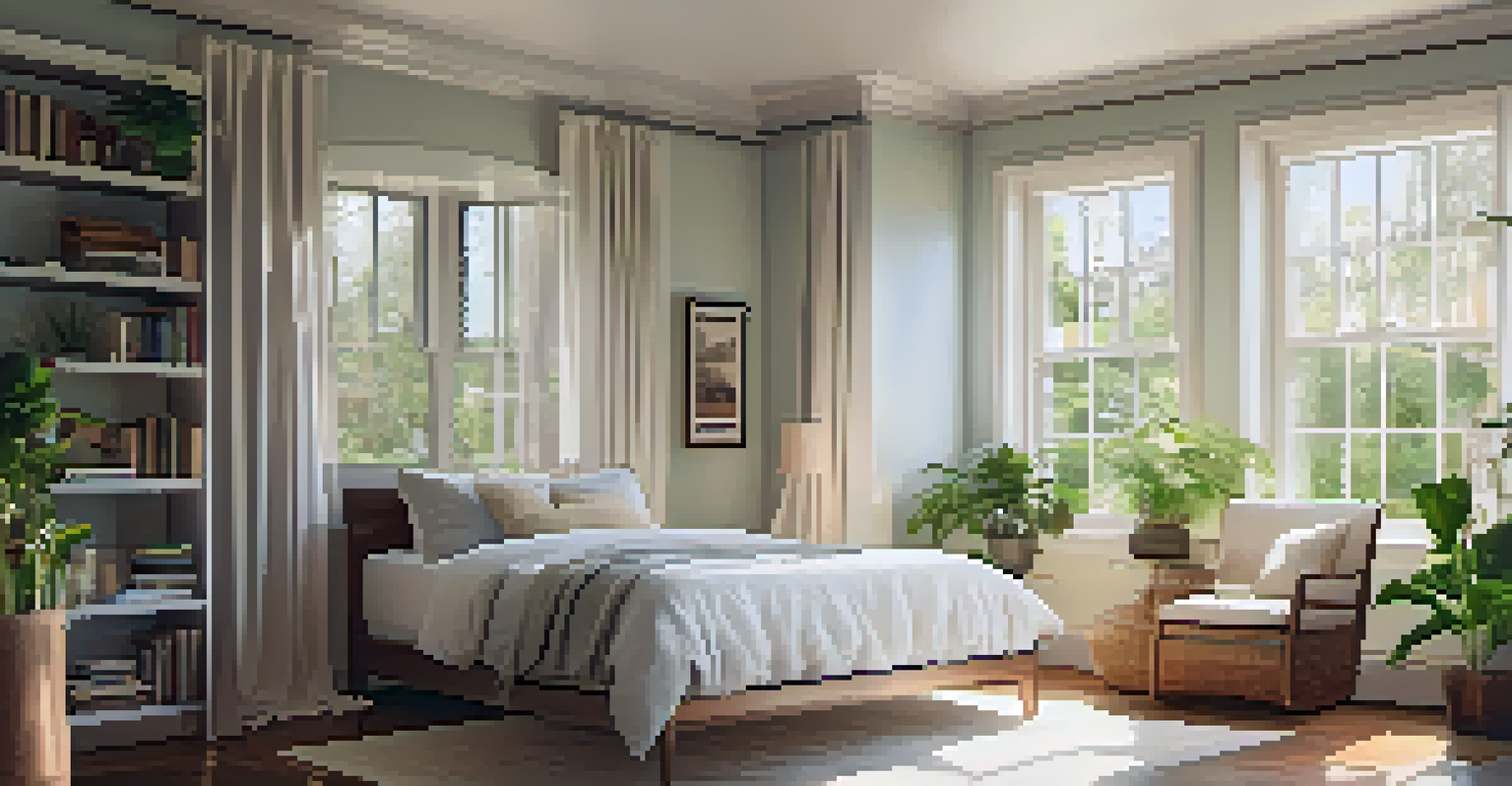Maximizing Natural Light to Improve Home Energy Efficiency

Understanding the Benefits of Natural Light
Natural light is more than just a pleasant addition to your home; it can significantly reduce energy costs. By maximizing sunlight, you can decrease your reliance on artificial lighting during the day, which can lead to substantial savings on your electricity bill. Additionally, natural light can enhance your mood and improve your overall well-being, creating a more inviting atmosphere.
Light is a thing that cannot be reproduced, but must be represented by something else—by color.
Studies show that exposure to natural light can boost productivity and improve mental health. When you embrace natural light, you’re not only cutting energy costs but also fostering a positive environment for your family. This creates a harmonious blend of energy efficiency and comfort that is hard to beat.
Incorporating natural light into your home design can also increase property value. Homes that are bright and airy tend to attract more buyers, making it a smart investment for the future. So, let's explore some practical ways to maximize this valuable resource.
Strategic Window Placement for Maximum Sunlight
The positioning of your windows plays a crucial role in how much natural light your home receives. South-facing windows capture the most sunlight throughout the day, making them ideal for rooms where you spend the most time. Conversely, north-facing windows provide softer, diffused light, which can be perfect for bedrooms or cozy reading nooks.

When designing or renovating your home, consider larger windows or even skylights to let in more light. This not only brightens your space but can also create a feeling of openness and connection to the outdoors. If structural changes aren’t feasible, think about adding reflective surfaces like mirrors to amplify the light you do receive.
Natural Light Reduces Energy Costs
Maximizing natural light in your home decreases reliance on artificial lighting, leading to significant savings on electricity bills.
Remember to take into account seasonal variations in sunlight as well. The angle of the sun changes throughout the year, so planning accordingly can help you maximize light exposure all year long.
Choosing the Right Window Treatments
Window treatments can make or break your natural light strategy. Heavy drapes and dark shades can block precious sunlight, whereas lighter fabrics can help diffuse light while still maintaining privacy. Consider options like sheer curtains or adjustable blinds that allow you to control the amount of light entering your home.
The sun is new each day.
Another option to consider is using reflective window film. This can help to reduce heat gain during the summer months while still allowing ample light to filter through. It’s an excellent way to enjoy the benefits of natural light without sacrificing comfort.
Lastly, be mindful of how your window treatments are layered. A combination of sheer and blackout options can provide the flexibility you need to maintain light while still enjoying darkness during movie nights or early mornings.
Using Color to Enhance Natural Light
The colors you choose for your walls and decor can greatly impact how light is perceived in your home. Light colors, especially whites, soft pastels, and pale shades, reflect natural light and make spaces feel brighter and more open. This creates a cheerful ambiance that can enhance your mood and energy levels.
In contrast, darker colors absorb light, which can lead to a more enclosed feeling. If you're drawn to darker hues, consider using them in smaller accents or in areas where you want to create a cozy atmosphere, like a reading corner. Balance is key!
Window Placement Enhances Light
Strategically placing windows, especially south-facing ones, captures more sunlight and creates a brighter, more inviting atmosphere.
Remember, the right lighting can also enhance your color choices. Use a mix of general, task, and accent lighting to highlight your favorite features while ensuring your spaces remain bright and inviting.
Incorporating Open Spaces for Light Flow
Open floor plans are becoming increasingly popular for a reason: they allow natural light to flow freely throughout your home. By minimizing walls and barriers, you can create a seamless connection between different areas, making your space feel larger and more inviting. This layout not only enhances light distribution but also fosters social interaction.
Consider removing unnecessary walls or using glass partitions to maintain a sense of separation while still allowing light to pass through. This approach can keep spaces airy without sacrificing privacy or functionality.
Additionally, think about the furniture layout. Arranging furniture to avoid blocking windows can create a more fluid space where light can easily travel, enhancing the overall brightness of your home.
Landscaping to Maximize Sunlight
Your outdoor space can significantly influence the amount of natural light that enters your home. Tall trees or dense shrubs positioned too close to windows can obstruct sunlight and create shadowy areas. When landscaping, consider planting trees and large plants further away from your home to allow sunlight to shine in unobstructed.
Opt for deciduous trees that shed their leaves in winter to let in more sunlight during those colder months while providing shade in the summer. This seasonal strategy can enhance your home’s energy efficiency by reducing heating costs in winter and cooling costs in summer.
Color and Materials Affect Light
Choosing light colors and reflective materials in your decor can enhance natural light, making spaces feel brighter and more open.
In addition to trees, consider the placement of outdoor structures like pergolas or fences. Designing these elements thoughtfully can help manage sunlight exposure effectively and create a beautiful outdoor area that complements your home.
Utilizing Light-Enhancing Materials
The materials you choose for your home can impact how light is absorbed or reflected. Opting for glossy or reflective surfaces in your decor can help bounce light around the room. For example, polished wood floors or glossy tiles can create a brighter atmosphere by reflecting light rather than absorbing it.
Additionally, using glass in various forms—like glass doors or partitions—can help maintain an open feel while allowing light to travel through spaces. This not only maximizes natural light but also adds a modern touch to your home.

Consider incorporating light-colored furniture and accessories to further enhance the brightness of your rooms. This cohesive approach to materials and colors will create a harmonious environment filled with natural light.
Conclusion: Embracing Natural Light for Efficiency
Maximizing natural light is a simple yet effective way to improve your home’s energy efficiency and create a more pleasant living space. By strategically placing windows, choosing the right treatments, and utilizing open spaces, you can harness the sun’s power to brighten your home and reduce energy costs.
Incorporating thoughtful landscaping and light-enhancing materials further complements your efforts, ensuring that every corner of your home feels warm and inviting. Remember, small changes can lead to significant improvements, so don’t hesitate to experiment with these strategies.
Ultimately, embracing natural light not only contributes to a greener lifestyle but also enhances your quality of life. So go ahead, let the sunshine in, and enjoy the benefits of a brighter, more energy-efficient home!